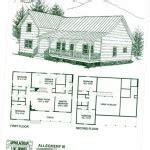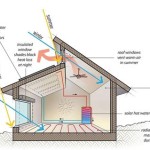Coastal living house plans are blueprints designed specifically for homes built in coastal areas. These plans take into account the unique challenges and opportunities presented by the coastal environment, such as hurricanes, flooding, and saltwater corrosion.
Coastal living house plans typically incorporate design elements that enhance the home’s resistance to these hazards. For example, they may include features such as elevated foundations, storm shutters, and impact-resistant windows. Coastal living house plans can also incorporate sustainable design elements, such as solar panels and rainwater harvesting systems, to maximize energy efficiency and minimize environmental impact.
In the following sections, we will discuss the key considerations when designing a coastal living house plan, including site selection, building materials, and architectural style. We will also provide examples of beautiful and functional coastal living house plans to inspire your own design.
When designing a coastal living house plan, there are several key considerations to keep in mind:
- Elevate the foundation
- Use hurricane-resistant materials
- Install impact-resistant windows
- Consider flood insurance
- Choose a sustainable design
- Maximize natural light
- Create outdoor living spaces
- Protect against saltwater corrosion
- Consider the local building codes
- Hire a qualified contractor
By following these tips, you can create a beautiful and functional coastal living home that will withstand the test of time.
Elevate the foundation
Elevating the foundation of your coastal home is one of the most important steps you can take to protect it from flooding and storm damage. Hurricanes and other coastal storms can produce storm surges that can inundate coastal areas with several feet of water. A properly elevated foundation will help to keep your home dry and habitable in the event of a flood.
- Building codes
Many coastal communities have building codes that require homes to be elevated to a certain height above sea level. These codes are in place to protect homes from flooding and storm damage. When designing your coastal home, be sure to check with your local building department to determine the required elevation for your property.
- Flood insurance
If you live in a coastal area, it is important to have flood insurance. Flood insurance will help to cover the cost of repairing or rebuilding your home if it is damaged by a flood. When you apply for flood insurance, the insurance company will require you to provide an elevation certificate. This certificate will verify the elevation of your home’s foundation above sea level.
- Cost
Elevating the foundation of your home can add to the cost of construction. However, the cost of elevating your home is typically much less than the cost of repairing or rebuilding your home after a flood. In addition, elevating your home may also reduce your flood insurance premiums.
- Design considerations
When elevating your home, you will need to consider the design of your home. You will need to make sure that the foundation is strong enough to support the weight of your home and that the stairs or ramps leading to your home are safe and accessible.
Elevating the foundation of your coastal home is an important step to take to protect your home from flooding and storm damage. By following the tips above, you can help to ensure that your home is safe and habitable for years to come.
Use hurricane-resistant materials
When building a coastal home, it is important to use hurricane-resistant materials to protect your home from the elements. Hurricanes can produce high winds, heavy rain, and storm surges that can damage or destroy homes that are not properly constructed.
- Roofing
The roof of your home is one of the most important parts to protect from hurricanes. High winds can lift and tear off roofs that are not properly secured. When choosing a roofing material for your coastal home, look for materials that are impact-resistant and wind-resistant. Some good options include metal roofing, tile roofing, and concrete roofing.
- Windows and doors
Windows and doors are another important part of your home to protect from hurricanes. High winds can shatter windows and doors, allowing wind and rain to enter your home. When choosing windows and doors for your coastal home, look for impact-resistant windows and doors. Impact-resistant windows and doors are made of materials that are designed to withstand high winds and impacts from flying debris.
- Siding
The siding of your home is also important to protect from hurricanes. High winds can tear off siding, exposing your home to the elements. When choosing siding for your coastal home, look for materials that are wind-resistant and impact-resistant. Some good options include vinyl siding, fiber cement siding, and brick siding.
- Garage doors
Garage doors are often overlooked when it comes to hurricane protection. However, garage doors can be a major source of damage if they are not properly secured. High winds can blow in garage doors, allowing wind and rain to enter your home. When choosing a garage door for your coastal home, look for a door that is wind-resistant and impact-resistant. Some good options include roll-up garage doors, sectional garage doors, and hurricane-rated garage doors.
By using hurricane-resistant materials, you can help to protect your coastal home from the elements and ensure that it remains safe and habitable for years to come.
Install impact-resistant windows
Impact-resistant windows are an important part of any coastal living house plan. Hurricanes and other coastal storms can produce high winds and flying debris that can shatter ordinary windows, allowing wind and rain to enter your home. Impact-resistant windows are designed to withstand these high winds and impacts, helping to protect your home and your family.
Impact-resistant windows are made of a variety of materials, including laminated glass, tempered glass, and polycarbonate. Laminated glass is made of two or more layers of glass that are bonded together with a layer of plastic. Tempered glass is a type of glass that has been heat-treated to make it stronger and more resistant to breakage. Polycarbonate is a type of plastic that is extremely strong and impact-resistant.
Impact-resistant windows are available in a variety of styles and finishes to match your home’s dcor. You can choose from single-hung windows, double-hung windows, casement windows, and awning windows. Impact-resistant windows can also be customized to fit your home’s unique needs.
If you live in a coastal area, it is important to install impact-resistant windows to protect your home from hurricanes and other coastal storms. Impact-resistant windows can help to keep your home safe and habitable, and they can also help to reduce your insurance premiums.
Consider flood insurance
Flood insurance is an important consideration for any coastal living house plan. Hurricanes and other coastal storms can produce storm surges that can inundate coastal areas with several feet of water. Even if your home is not located in a high-risk flood zone, it is still important to consider flood insurance. Flooding can occur anywhere, and it can cause significant damage to your home and belongings.
- What does flood insurance cover?
Flood insurance covers damage to your home and belongings caused by flooding. This includes damage caused by storm surges, hurricanes, and other coastal storms. Flood insurance can also cover the cost of temporary living expenses if your home is uninhabitable due to flooding.
- How much does flood insurance cost?
The cost of flood insurance varies depending on a number of factors, including the location of your home, the type of coverage you choose, and the amount of coverage you need. You can get a quote for flood insurance from your insurance agent.
- Is flood insurance required?
Flood insurance is required by law for homes that are located in high-risk flood zones. However, it is a good idea to consider flood insurance even if your home is not located in a high-risk flood zone. Flooding can occur anywhere, and it can cause significant damage to your home and belongings.
- How to get flood insurance
You can get flood insurance from your insurance agent. When you apply for flood insurance, you will need to provide your insurance agent with information about your home, including the location of your home, the type of construction, and the elevation of your home above sea level. Your insurance agent will then provide you with a quote for flood insurance.
Flood insurance is an important consideration for any coastal living house plan. By purchasing flood insurance, you can protect your home and belongings from the financial devastation that can be caused by flooding.
Choose a sustainable design
Sustainability is an important consideration for any coastal living house plan. By choosing a sustainable design, you can help to reduce your environmental impact and save money on energy costs.
- Use energy-efficient appliances and lighting
Energy-efficient appliances and lighting use less energy to operate, which can save you money on your energy bills. When choosing appliances and lighting for your coastal home, look for the ENERGY STAR label. ENERGY STAR appliances and lighting meet strict energy efficiency standards set by the U.S. Environmental Protection Agency (EPA).
- Install solar panels
Solar panels can generate electricity from the sun, which can help to reduce your reliance on fossil fuels. Solar panels can be installed on the roof of your home or on a ground-mounted system. The cost of solar panels has come down significantly in recent years, making them a more affordable option for many homeowners.
- Use sustainable building materials
Sustainable building materials are made from renewable or recycled materials, and they have a lower environmental impact than traditional building materials. Some examples of sustainable building materials include bamboo flooring, recycled glass countertops, and cork insulation.
- Design your home to be energy-efficient
There are a number of design features that can help to make your home more energy-efficient. These features include proper insulation, energy-efficient windows and doors, and a well-designed floor plan. By incorporating these features into your coastal home, you can help to reduce your energy consumption and save money on your energy bills.
By choosing a sustainable design for your coastal living house plan, you can help to reduce your environmental impact and save money on energy costs.
Maximize natural light
Natural light is essential for a healthy and comfortable living environment. It can help to improve your mood, boost your energy levels, and reduce your risk of developing certain health problems. When designing your coastal living house plan, there are a number of ways to maximize natural light.
One way to maximize natural light is to use large windows and doors. Windows and doors allow natural light to enter your home, and they can also help to create a more open and airy feel. When choosing windows and doors for your coastal home, look for products that are energy-efficient and impact-resistant. Energy-efficient windows and doors will help to keep your home cool in the summer and warm in the winter, and impact-resistant windows and doors will help to protect your home from hurricanes and other coastal storms.
Another way to maximize natural light is to use skylights. Skylights are windows that are installed in the roof of your home. They allow natural light to enter your home from above, and they can be a great way to brighten up a dark room. When choosing skylights for your coastal home, look for products that are energy-efficient and impact-resistant. Energy-efficient skylights will help to keep your home cool in the summer and warm in the winter, and impact-resistant skylights will help to protect your home from hurricanes and other coastal storms.
You can also maximize natural light by using reflective surfaces. Reflective surfaces, such as mirrors and white paint, can help to bounce natural light around your home. This can help to brighten up even the darkest rooms. When using reflective surfaces in your coastal home, be sure to choose products that are resistant to moisture and corrosion.
By following these tips, you can maximize natural light in your coastal living house plan. Natural light can help to improve your mood, boost your energy levels, and reduce your risk of developing certain health problems. It can also help to create a more open and airy feel in your home.
Create outdoor living spaces
Outdoor living spaces are an essential part of any coastal living house plan. They allow you to enjoy the beautiful weather and stunning views that coastal living has to offer. When designing your outdoor living spaces, there are a few things to keep in mind:
- Choose the right location
The location of your outdoor living spaces is important. You want to choose a spot that is protected from the elements, but that also has good views. If you have a backyard, you might want to consider creating an outdoor living space there. If you have a balcony or patio, you can create an outdoor living space there as well.
- Choose the right furniture
The furniture you choose for your outdoor living spaces should be comfortable and durable. You also want to choose furniture that is resistant to the elements. Wicker, teak, and aluminum are all good choices for outdoor furniture.
- Add some amenities
To make your outdoor living spaces more enjoyable, you can add some amenities such as a fire pit, a grill, or a water feature. These amenities can help you to relax and enjoy the outdoors.
- Protect your outdoor living spaces from the elements
The elements can take a toll on your outdoor living spaces. To protect your outdoor living spaces from the elements, you can use a variety of products such as sealants, stains, and covers.
By following these tips, you can create beautiful and functional outdoor living spaces that you can enjoy for years to come.
Protect against saltwater corrosion
Saltwater corrosion is a major concern for coastal homes. The salt in the air and water can corrode metal components, such as nails, screws, and bolts. This corrosion can weaken the structural integrity of your home and lead to costly repairs. To protect against saltwater corrosion, it is important to use corrosion-resistant materials and to take steps to minimize the exposure of metal components to salt.
One of the most important things you can do to protect against saltwater corrosion is to use corrosion-resistant materials. This includes using stainless steel nails, screws, and bolts. Stainless steel is a type of steel that is resistant to rust and corrosion. It is a good choice for use in coastal areas where there is a lot of salt in the air and water.
In addition to using corrosion-resistant materials, you can also take steps to minimize the exposure of metal components to salt. This includes keeping metal components dry and clean. You should also avoid using metal components in areas that are exposed to salt spray or saltwater flooding.
If you are concerned about saltwater corrosion, you should have your home inspected by a qualified professional. A professional can identify areas where your home is at risk for corrosion and recommend steps to protect your home.
Saltwater corrosion is a serious problem for coastal homes, but it can be prevented by taking the proper precautions. By using corrosion-resistant materials and minimizing the exposure of metal components to salt, you can protect your home from the damaging effects of saltwater corrosion.
Consider the local building codes
When designing and building a coastal living house, it is important to consider the local building codes. Building codes are regulations that govern the construction of buildings and structures. They are in place to ensure that buildings are safe and habitable. Local building codes may vary depending on the location of the property. It is important to check with the local building department to determine the specific requirements for your area.
Building codes typically address a variety of topics, including:
- Foundation requirements
Building codes will specify the minimum requirements for the foundation of a coastal home. This includes the depth of the foundation, the type of materials that can be used, and the size of the footings.
- Wind resistance requirements
Building codes will also specify the minimum requirements for the wind resistance of a coastal home. This includes the type of roofing materials that can be used, the size and spacing of the roof trusses, and the strength of the walls.
- Flood resistance requirements
Building codes will also specify the minimum requirements for the flood resistance of a coastal home. This includes the elevation of the home above sea level, the type of floodproofing materials that can be used, and the size and location of the flood vents.
- Energy efficiency requirements
Building codes will also specify the minimum requirements for the energy efficiency of a coastal home. This includes the type of insulation that can be used, the size and efficiency of the windows and doors, and the efficiency of the heating and cooling systems.
It is important to note that building codes are minimum requirements. You may choose to build a home that exceeds the minimum requirements. However, it is important to make sure that your home meets the minimum requirements in order to ensure that it is safe and habitable.
By considering the local building codes when designing and building your coastal living house, you can help to ensure that your home is safe, habitable, and code-compliant.
Hire a qualified contractor
Building a coastal living house is a complex project that requires the expertise of a qualified contractor. A qualified contractor will have the knowledge and experience to design and build a home that is safe, durable, and beautiful.
- Experience in coastal construction
A qualified contractor should have experience in coastal construction. This includes experience in designing and building homes that are resistant to hurricanes, floods, and other coastal hazards.
- Knowledge of local building codes
A qualified contractor should be familiar with the local building codes. This is important to ensure that your home is built in accordance with the minimum safety and construction standards.
- Strong reputation
A qualified contractor should have a strong reputation in the community. You can check with the Better Business Bureau or ask for references from previous clients to learn more about the contractor’s reputation.
- Licensed and insured
A qualified contractor should be licensed and insured. This is important to protect you in the event of any accidents or damage to your property.
Hiring a qualified contractor is an important step in the process of building a coastal living house. By hiring a qualified contractor, you can help to ensure that your home is safe, durable, and beautiful.
:max_bytes(150000):strip_icc()/chome_01_4-2000-94bbaaea8f944cc1a3bb612a7bbb0375.jpg)







:max_bytes(150000):strip_icc()/chome_01_3-2000-c432b00579d7480dbea244a9dc2a138b.jpg)

Related Posts








